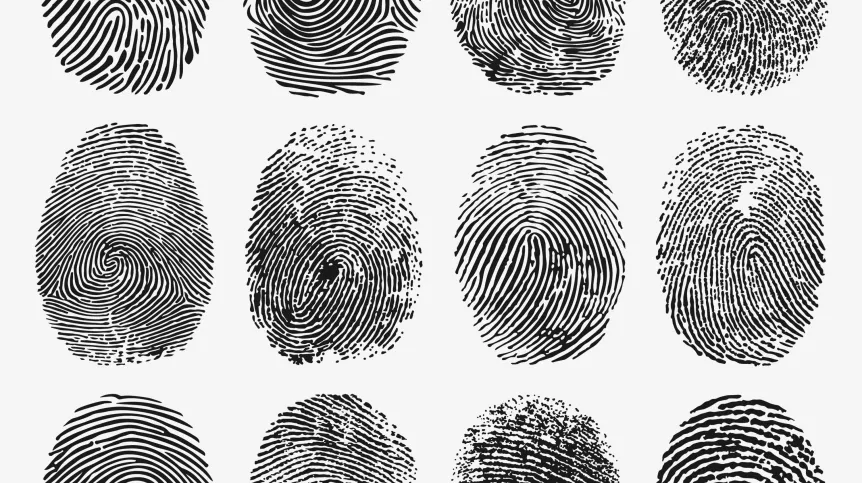
Aneta Lewkowicz, PhD, a scientist from the University of Gdańsk, has developed a new method for visualising dactyloscopic traces on thermal paper, including receipts and government documents. Her invention can provide irrefutable evidence confirming a person's identity or placing them at the scene of an incident.
'My invention is an innovative method and a specially developed solution for revealing fingerprint traces. This unique minutiae pattern - individual for each person - can become irrefutable evidence confirming a person's identity or placing them at the scene of an incident. While identification is often based on DNA analysis, a fingerprint also plays a key role in investigations', says Aneta Lewkowicz, PhD, from the Faculty of Mathematics, Physics and Informatics of the University of Gdańsk.
The new method concerns thermal paper, which is used, for example, to print receipts and government documents. The scientist admits that until now, revealing fingerprint traces on this type of material has been very difficult for experts. Traditional methods darkened the surface, making it impossible to read the traces.
Thanks to the new method, it will be possible to obtain clearer and more durable fingerprints, and thus faster and more accurately analyse them, increase user safety by reducing the toxicity of the solution, and use the technique in the field, outside the laboratory.
'Previously used procedures, for both regular and thermal paper, were based on toxic solvents. Our team at the Forensic Laboratory of the Faculty of Law and Administration of the University of Gdańsk puts great emphasis on minimizing the toxicity of these processes, introducing more environmentally friendly solutions', she explains.
The researcher emphasises that her research goal was to facilitate and improve the activities of services at the scene of the incident. 'Introducing innovative methods and procedures for revealing forensic traces will improve the work of forensic technicians and court experts, while ensuring the highest scientific standards in line with the latest knowledge', she adds.
'My invention is the culmination of several years of research on visualising dactyloscopic traces and less toxic solutions using 1,8-diazafluoren-9-one (DFO), which I began in 2019. I focused on analysing the spectroscopic properties of this compound and searched for an environment/matrix for this molecule that could be used in forensics', she says.
She adds that during her research she discovered many properties of DFO, which inspired her to plan further projects. 'The current patent is just the beginning. It opens the way to the wide use of molecular physics in forensic science, especially in the study of fingerprint traces, DNA analysis and determining the time of death. This is an exciting prospect for the development of new technologies in this area', the expert believes.
The new technology can be used by forensic laboratories, crime scene investigation units or institutions responsible for the analysis of evidence.
The scientist admits that she shares her invention with students and doctoral candidates, who use it during classes and research. The next step - as she announces - will be the potential commercialisation of this solution. 'Under the auspices of the University of Gdańsk, we will take further steps, which I hope will lead to its introduction to the market, to support forensic laboratories, private units specialising in fingerprinting, and universities offering courses such as criminology, forensics, law. I believe that this invention will become a valuable tool in the work of experts and scientists', she says.
She assures that she is not limiting herself to one invention; together with other scientists, she is working on further innovative procedures that enable the visualization and detection of traces in a more effective, safe and practical way for people working in the field, at the scene of the incident.
Aneta Lewkowicz's invention, created at the Faculty of Law and Administration of the University of Gdańsk, concerning an innovative method of visualizing fingerprint traces, has been granted protection by the Polish Patent Office. (PAP)
pm/ bar/ lm/













